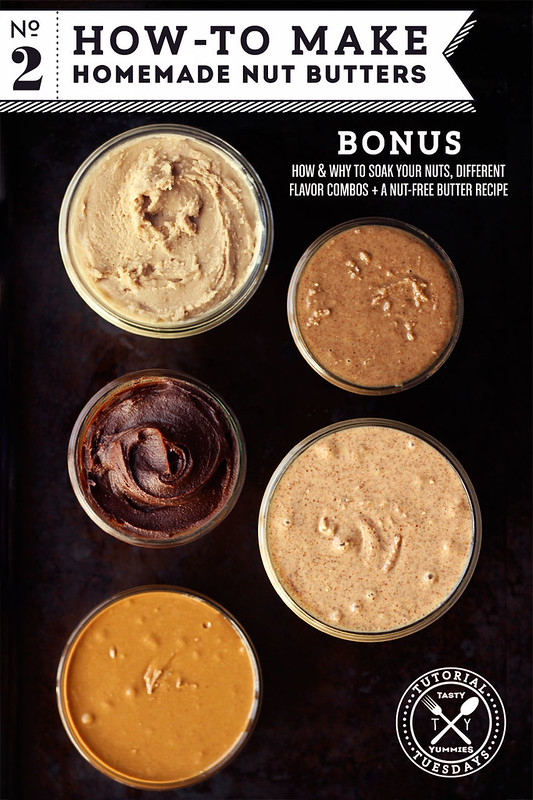-
How-to Make Homemade Nut Butters
How-to Make Homemade Nut Butters
I am so excited about this next post in the Tutorial Tuesday series. It has been quite the undertaking sampling, soaking, dehydrating and playing with different flavors but it is so easy and so totally worth it to make your own homemade nut butters. OK, so I may have gone a little overboard, but hopefully all of your nut butter questions have now been answered.
Besides the simple how-to instructions, I wanted to include some insight as to why I recommend soaking your nuts and seeds, how to also dehydrate them after you have soaked them and all of the various times for doing so. Plus, you will find some various flavor combinations that I love and even a nut-free sunflower seed butter recipe. Hope you guys enjoy.
What Nuts?
Basically if it’s a nut (and even many seeds) and you like it, you can make a butter out of it. I have sampled so many different types of nut butters and the sky is the limit. I wish I could afford to buy enough of each of the nuts pictured to sample making nut butters with all of them for you guys, but that is certainly out of the budget when buying organic. So for this tutorial, I just went with a couple of my personal favorites. Almond, cashew, pecan, hazelnut (in a homemade nutella) and I even made a nut-free sunflower seed butter for you.
To Soak or Not To Soak.
Why I Choose to Soak: Most nuts, seeds, grains and beans are covered in natural chemicals – enzyme inhibitors and toxins – that protect them while growing, both from sprouting prematurely and also from predators. These nutritional inhibitors and toxic substances are enzyme inhibitors, phytates (phytic acid), polyphenols (tannins), and goitrogens. Once harvested, those same chemicals, the major one being phytic acid – are indigestible to the human body and must be broken down before consumption. When food containing phytic acid is consumed, the acid combines with important minerals like calcium, magnesium, copper, iron and especially zinc in the intestinal tract and blocks their absorption which inhibits our digestive systems’ ability to break the nut down properly.
The very simple process of soaking releases these chemicals, helping you to absorb your food’s essential minerals and nutrients. Additionally, by soaking the nuts with the removal of these nutritional inhibitors and toxic substances, the flavor and taste is much more ideal and appealing.
To summarize: Soaking nuts and seeds makes them easier to digest and improves their flavor. Read the rest of this entry »









